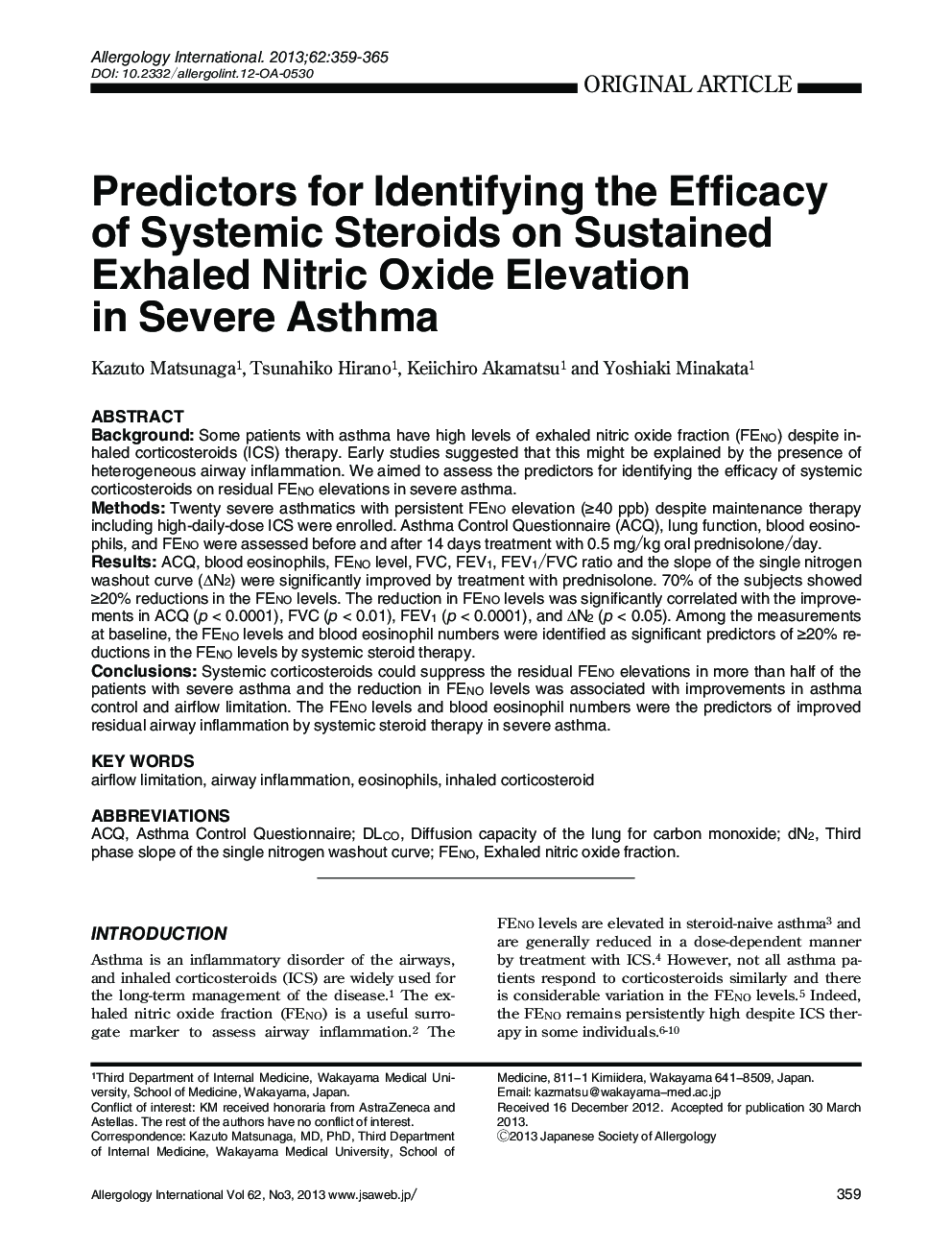| Article ID | Journal | Published Year | Pages | File Type |
|---|---|---|---|---|
| 3340824 | Allergology International | 2013 | 7 Pages |
ABSTRACTBackgroundSome patients with asthma have high levels of exhaled nitric oxide fraction (FENO) despite inhaled corticosteroids (ICS) therapy. Early studies suggested that this might be explained by the presence of heterogeneous airway inflammation. We aimed to assess the predictors for identifying the efficacy of systemic corticosteroids on residual FEno elevations in severe asthma.MethodsTwenty severe asthmatics with persistent FENO elevation (≥ 40 ppb) despite maintenance therapy including high-daily-dose ICS were enrolled. Asthma Control Questionnaire (ACQ), lung function, blood eosinophils, and FENO were assessed before and after 14 days treatment with 0.5 mg/kg oral prednisolone/day.ResultsACQ, blood eosinophils, FENO level, FVC, FEV1, FEV1/FVC ratio and the slope of the single nitrogen washout curve (∆N2) were significantly improved by treatment with prednisolone. 70% of the subjects showed ≥ 20% reductions in the FENo levels. The reduction in FENo levels was significantly correlated with the improvements in ACQ p < 0.0001), FVC (p < 0.01), FEV1 (p < 0.0001), and ∆N2p < 0.05). Among the measurements at baseline, the FENO levels and blood eosinophil numbers were identified as significant predictors of ≥ 20% reductions in the FEFENO levels by systemic steroid therapy.ConclusionsSystemic corticosteroids could suppress the residual FENO elevations in more than half of the patients with severe asthma and the reduction in FENO levels was associated with improvements in asthma control and airflow limitation. The FENO levels and blood eosinophil numbers were the predictors of improved residual airway inflammation by systemic steroid therapy in severe asthma.
